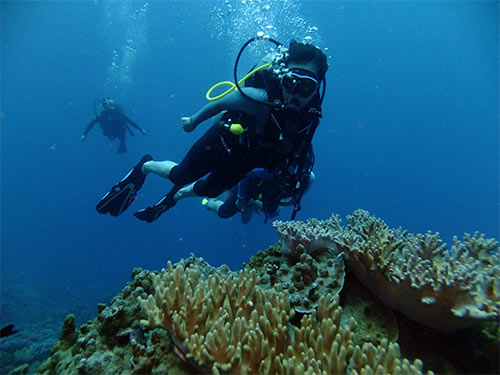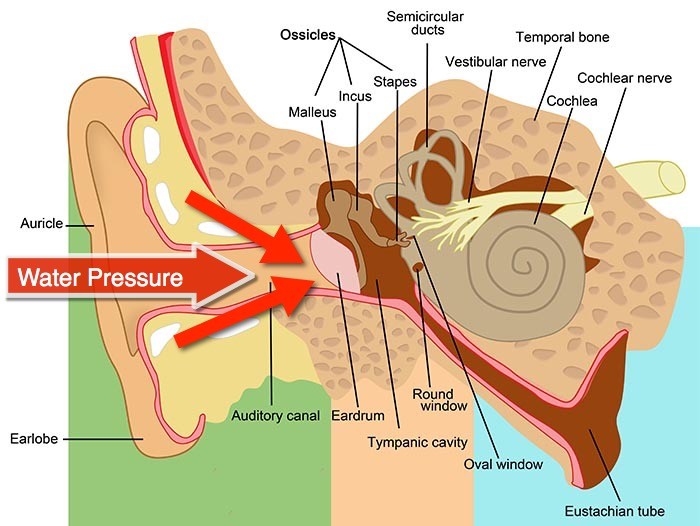Unlock Your Scuba Potential: 10 Game-Changing Equalizing Tricks!
 Equalizing is a fundamental skill for every scuba diver. It ensures that you can safely and comfortably explore the underwater world without discomfort or potential injury. Whether you’re a beginner or an experienced diver, mastering the art of equalizing is crucial. In this article, we will provide you with ten invaluable tips for easy equalizing on your scuba diving adventures.
Equalizing is a fundamental skill for every scuba diver. It ensures that you can safely and comfortably explore the underwater world without discomfort or potential injury. Whether you’re a beginner or an experienced diver, mastering the art of equalizing is crucial. In this article, we will provide you with ten invaluable tips for easy equalizing on your scuba diving adventures.
1. Start Early and Gradually
Equalizing should begin even before you descend into the water. Start equalizing your ears as soon as your head is submerged. Begin with gentle, gradual pressure adjustments by pinching your nostrils and exhaling gently through your nose. This helps your body acclimatize to the changing pressure as you descend deeper.
2. Descend Feet First
Whenever possible, descend feet first. This position allows the air in your lungs to move more freely, making equalization easier. Additionally, descending feet first reduces the risk of sinus barotrauma, a common issue among divers.
3. Equalize Frequently
Don’t wait until you feel discomfort to equalize. Make it a habit to equalize every few feet of descent. This frequent equalization helps maintain balanced pressure between your ears and the surrounding water, preventing barotrauma.
4. Use the Valsalva Maneuver
The Valsalva maneuver is a widely-used equalization technique. Pinch your nostrils shut, close your mouth, and gently blow through your nose. This action forces air into your Eustachian tubes, equalizing the pressure in your middle ear.
5. Master the Frenzel Maneuver
The Frenzel maneuver is a more advanced equalization technique that many experienced divers find effective. It involves closing your nostrils and using your tongue to push air into your Eustachian tubes. This precise control can help you equalize more efficiently.
6. Stay Hydrated
Hydration plays a significant role in equalization. Dehydration can thicken mucus in your Eustachian tubes, making it more challenging to equalize. Ensure you are well-hydrated before your dive and drink water regularly during surface intervals.
7. Avoid Overexertion
Excessive physical exertion can affect your ability to equalize. Avoid strenuous activities before and during your dive to reduce the risk of ear barotrauma. Relax and take it easy to ensure a smoother equalization process.
8. Descend Slowly
Rushing your descent can make equalizing more difficult. Take your time as you descend, allowing your ears to adjust gradually to the changing pressure. Slow descents are safer and more comfortable.
9. Equalize on Ascent
Equalization is not just for descent. It’s equally important during your ascent. Continue equalizing as you return to the surface to prevent reverse block, a condition where your ears can become blocked during ascent.
10. Seek Professional Training
If you struggle with equalization or experience discomfort, consider seeking professional help. A certified diving instructor can provide guidance, techniques, and additional tips to improve your equalization skills.
Preventing Scuba Diver Ear Problems
Ensuring safe equalization of ear pressure involves the conscious act of opening the typically closed Eustachian tubes, each of which features a one-way valve known as the “Eustachian cushion” at its lower end. This valve serves to prevent contaminants from the nasal passage from traveling up to the middle ear. The process of opening these tubes to allow higher-pressure air from the throat into the middle ears is a crucial step in maintaining ear health, and it’s a mechanism we often execute without even realizing it—primarily through the act of swallowing.
Throughout the day, our ears undergo equalization numerous times as a natural response to changing conditions. Oxygen is continually absorbed by the tissues within the middle ear, which in turn lowers the air pressure in this confined space. When we swallow, a coordinated effort takes place involving the contraction of the soft palate muscles, which effectively pulls the Eustachian tubes open. This opening allows a rush of air from the throat to enter the middle ears, thereby equalizing the pressure differential that has developed. The resulting faint “pop” or “click” sound you might hear with each swallow signifies this successful equalization process.
In summary, understanding the role of the Eustachian tubes and their connection to swallowing helps us appreciate the vital function they serve in maintaining ear health by ensuring pressure equilibrium in the middle ear.









